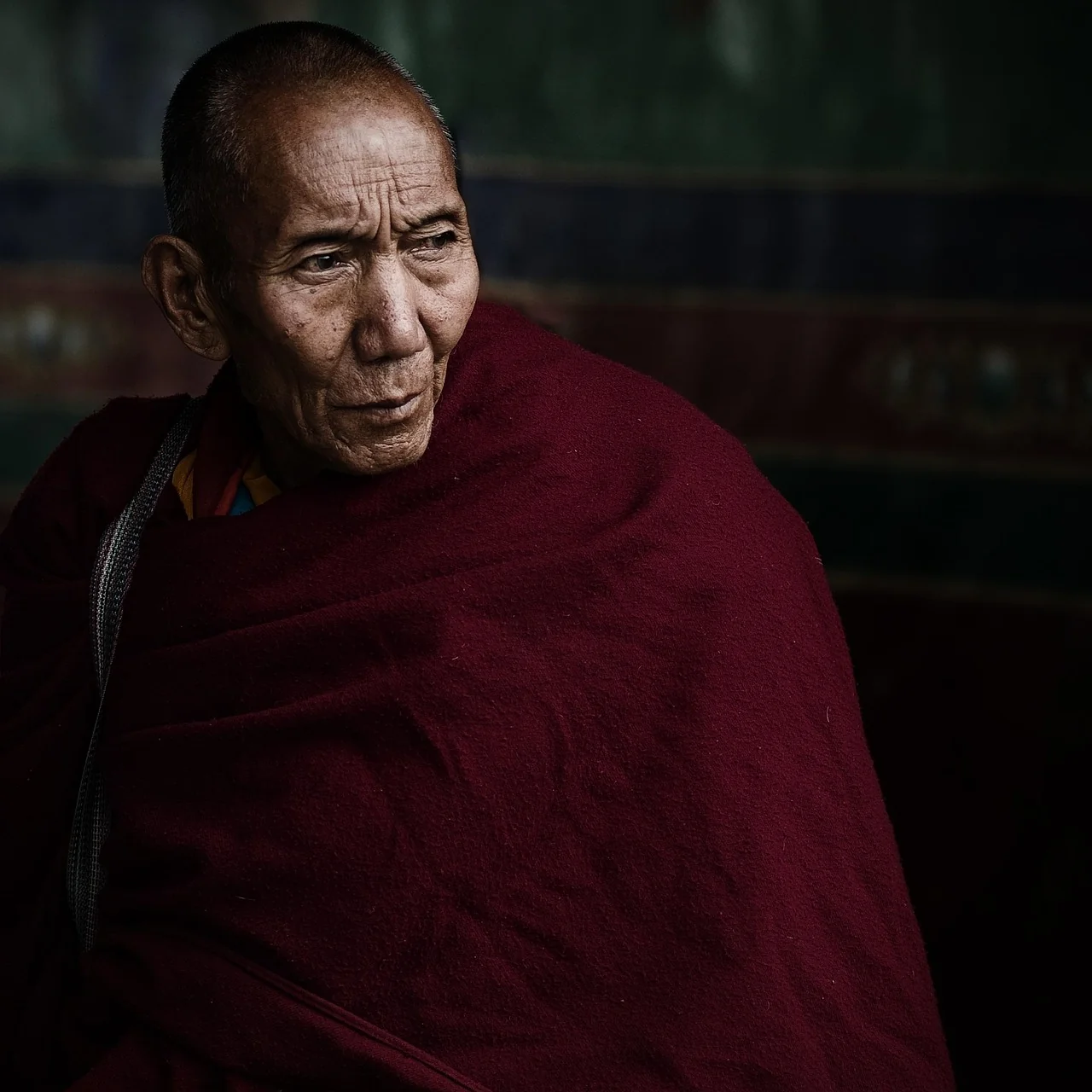Does your mind feel more like a browser with 50 open tabs than a tranquil sanctuary? You settle in to meditate, but the hum of the fridge, a notification ping, or the memory of a forgotten task instantly pulls you away. The secret to a deeper, more focused practice might not be trying harder, but in crafting the perfect environment around you. This is the power of your meditation background—the intentional sensory space you create to support your practice.
Think of it as the stage for your inner work. It’s not just about finding a quiet corner; it’s about the sounds you hear, the light in the room, and the visual cues that tell your brain it’s time to unwind. In this guide, we’ll explore everything from crafting a serene physical nook and choosing between soothing soundscapes or profound silence, to leveraging digital tools for immersive experiences. Get ready to discover how the perfect backdrop can transform your meditation from a struggle into a sanctuary.
What is a Meditation Background and Why Does It Matter?
A meditation background is more than just the wall you face while sitting. It's the complete sensory environment you consciously design to facilitate your practice. It encompasses everything your senses perceive:
- What you see: The lighting, the tidiness of the space, the colors on the wall.
- What you hear: The presence of silence, music, nature sounds, or a guided voice.
- What you feel: The comfort of your cushion and the temperature of the room.
This intentional setup acts as a powerful signal to your nervous system. When you consistently meditate in a similar environment, your brain begins to associate that space and those sensory cues with a state of calm and inward focus. It’s a form of classical conditioning that makes settling into meditation faster and easier over time.
The primary benefit is the reduction of external distractions. By controlling your environment, you give your mind fewer reasons to wander. A dedicated background creates a container for your practice, allowing you to let go of the outside world and dive deeper into your meditation experience. It’s not about creating a perfectly sterile bubble, but about designing a supportive space that works for you.
Crafting Your Physical Meditation Background
Your physical space is the foundation of your meditation background. It doesn't require a spare room or expensive decor; it simply requires intention. The goal is to create a spot that feels reserved for your practice, a personal sanctuary that welcomes you each day.
Focus on creating a dedicated space. Even a small corner of a bedroom can become your meditation nook. Consistency is key. By returning to the same spot, you reinforce the mental association that this is a place for quieting the mind.
Key Elements to Consider:
- Lighting: Harsh overhead lights can be jarring. Opt for soft, indirect lighting.
- Natural light from a window is ideal for morning practice.
- Dimmable lamps or salt lamps provide a warm, gentle glow.
- Candlelight can be powerful for evening sessions, offering a flickering focal point.
- Clutter-Free Zone: Visual clutter often translates to mental clutter. A tidy, minimal space helps quiet the mind. Ensure the area is free of laundry, stacks of mail, or other reminders of daily chores.
- Comfort: Physical discomfort is a major distraction. Invest in a supportive meditation cushion, bench, or a comfortable chair. Your posture should be relaxed yet alert, allowing you to forget your body and focus on your mind.
- Personal Touches: Add one or two meaningful items that evoke a sense of peace. This could be:
- A simple plant
- A calming piece of art or tapestry
- A smooth stone or crystal
- A small statue or symbol
The Power of Sound: Choosing Your Auditory Background
Sound is arguably the most influential component of your meditation background. The right auditory backdrop can mask disruptive noises, guide your attention, and directly influence your brainwave states. The choice is highly personal and can even vary from day to day depending on your needs.
The Silence Background
Meditating in pure silence is a profound practice. It challenges you to sit with your own thoughts and the subtle sounds of your environment without resistance.
- Best for: Advanced practitioners and those looking to develop deep concentration without any external aids.
- The Challenge: It can be difficult, especially for beginners, as there is nothing to "focus on" except the absence of sound, which can make internal chatter seem louder.
- Pro Tip: If true silence is impossible, use a fan or a white noise machine to create a consistent, neutral sound blanket that masks irregular noises.
Guided Meditations
Here, the primary background is a narrator's voice. It provides structure, instruction, and a point of focus, making it an excellent choice for beginners or anyone dealing with a particularly busy mind.
- Best for: Beginners, anyone learning a new technique, or those who need help meditation to clear your mind.
- The Benefit: It gives your mind a job to do—following the guidance—which leaves less room for distraction.
Music for Meditation
Specially composed music can alter your mood and mental state. Different genres serve different purposes.
- Ambient Music: Creates a soothing, atmospheric soundscape without a strong melody.
- Binaural Beats: Uses slightly different frequencies in each ear to encourage your brain to enter specific brainwave states like Alpha (relaxed) or Theta (meditative).
- Classical or Instrumental: Lacks distracting lyrics and can evoke powerful emotional responses.
Nature Soundscapes
The sounds of the natural world are inherently calming to our nervous systems. They connect us to a rhythm that is slow, steady, and predictable.
- Rain and Thunderstorms: The consistent patter of rain is incredibly effective at masking other noises and inducing relaxation.
- Ocean Waves: The rhythmic crash and pull of waves is a classic for a reason, mimicking the natural rhythm of breathing.
- Forest Sounds: Birdsong, rustling leaves, and distant streams can create a feeling of being safely immersed in nature.
Mantras and Chants
Using a repetitive sacred sound, word, or phrase as your auditory background gives the mind a single, simple object of focus. The vibration and rhythm of the chant can be deeply absorbing.
- Best for: Traditional Meditation practices like Transcendental Meditation, Vedic traditions, or anyone who finds focus in repetition.
- The Benefit: The mantra becomes the entire content of your meditation, pushing other thoughts to the periphery.
Digital Meditation Backgrounds: Apps, Videos, and Virtual Spaces
In our modern world, technology offers incredible tools for crafting your meditation background. These digital solutions provide accessibility and variety that was once unimaginable.
Meditation Apps: Apps like Calm, Headspace, and Insight Timer are powerhouses for auditory backgrounds. They offer vast libraries of guided meditations, music, and nature soundscapes, all categorized by goal—sleep, focus, or anxiety relief. They make it effortless to find and use a high-quality sound background instantly.
YouTube and Video: For a combined visual and auditory background, YouTube is a treasure trove. You can find:
- 8-hour nature videos of a misty forest or a beach sunset.
- Fractal animations or moving mandalas that provide a mesmerizing focal point for the eyes.
- Slow, scenic walks through Japanese gardens or along mountain streams.
These videos are perfect for setting up on a tablet or TV to create an immersive environment in your living space.
Virtual Reality (VR) Meditation: This is the cutting edge of digital meditation backgrounds. VR headsets can transport you to a virtual temple, a mountain peak, or even the edge of the solar system. The complete immersion of sight and sound makes it easier than ever to feel disconnected from your physical surroundings and fully immersed in your practice.
Matching Your Meditation Background to Your Practice Style
There is no one-size-fits-all solution. The most effective meditation background is one that supports your specific intention and technique. Aligning your environment with your practice style can dramatically improve your results.
For Mindfulness & Breath Awareness: The goal is to observe the present moment without embellishment.
- Ideal Background: Silence or very subtle, consistent nature sounds like distant rain or a gentle stream. This provides a neutral canvas for you to observe your breath and sensations.
For Loving-Kindness (Metta): This practice involves cultivating feelings of compassion and love for yourself and others.
- Ideal Background: Soft, heart-opening music without lyrics or a guided feel good meditation specifically for Metta. The music can help evoke the emotional state you're trying to cultivate.
For Body Scan: This requires subtle attention to physical sensations throughout the body.
- Ideal Background: A very neutral and quiet background is best. A guided body scan is excellent, as the voice will direct your attention. If practicing alone, near-silence or a very soft, consistent hum of white noise works well to prevent auditory distractions.
For Transcendental Meditation or Mantra-Based Practice: The focus is entirely on the repetition of a mantra.
- Ideal Background: Silence is traditional and preferred, as it allows you to fully attend to the subtle vibrations of the mantra internally.
For Sleep Meditation or Yoga Nidra: The goal is deep relaxation and often, to fall asleep.
- Ideal Background: A guided sleep meditation is perfect. Alternatively, deep, resonant music like ambient cello or binaural beats in the Delta wave range can directly support the transition into sleep.
How to Choose and Test Your Perfect Background
With all these options, the best approach is to become a scientist of your own experience. Your perfect meditation background is the one that helps you feel focused, calm, and consistent in your practice.
Start by identifying your biggest challenge. Is it external noise? A racing mind? Physical restlessness? Your challenge points you toward a solution.
- Distracted by noise? -> Try nature soundscapes or white noise.
- Can't stop thinking? -> Try a guided meditation or a mantra.
- Feeling emotionally flat? -> Try heart-opening music.
- Feeling overstimulated? -> Embrace silence or very minimal ambient sound.
Commit to a one-week trial. Choose one type of background—for example, nature sounds—and use it for every meditation session for a full week. At the end of the week, jot down a few notes. Did it help? Did you get bored? Then, switch to something different, like guided meditations, for the next week. This process of experimentation will give you concrete data about what truly works for you. You might even commit to a longer test, like trying twenty minutes meditation daily with a specific background to see how it impacts your consistency and depth.
Remember that your needs may change. The background that supports you during a stressful workday might be different from what you need for a gentle Sunday morning session. Give yourself permission to have a "toolkit" of backgrounds to choose from.
Your meditation background is a dynamic and personal element of your practice. It’s not about adding more rules, but about discovering what helps you release resistance and find ease. By thoughtfully crafting your physical space, consciously selecting your sounds, and leveraging modern tools, you build a sanctuary that supports your journey inward. This intentional setup does more than just reduce distractions; it sends a powerful message to your deepest self that this time, and this space, are reserved for peace.
In summary, the practice of meditation is a profound tool for mental and physical well-being, deeply rooted in a rich historical tapestry. This exploration has illuminated its journey from ancient spiritual traditions to its modern, secular applications, demonstrating its timeless relevance. The core takeaway is that meditation is an accessible and scientifically-supported practice for anyone seeking to reduce stress, enhance focus, and cultivate a greater sense of inner peace. Its benefits are not reserved for monks or mystics but are available to all who are willing to dedicate a few moments of their day. By understanding its background, we can appreciate the depth of this practice beyond a simple relaxation technique. We encourage you to take this knowledge and begin your own exploration, starting with just a few minutes of mindful breathing. The path to a calmer, more centered life is readily available, and your first step begins now.



